Sensemaking: Into the void
How do we make sense when we don’t know what’s going on? What happens when we find ourselves diving into ‘the void’ of the unknown and uncertain? And what can we do there, to make enough sense of ‘the unknown’ to make useful decisions?
All too often, the standard approach seems to be what’s described as ‘solutioneering‘. We label the unknown as ‘the problem’, then grab at the first answer that comes our way, and declare ‘problem solved!’ – whether or not this supposed ‘the solution’ matches the underlying need at all:
For me, a more useful way to tackle this is to take a careful look down into the lower-right corner of the SCAN frame:
Down in that corner is the world of the Not-known, the None-of-the-above, the world of deep ‘unorder’ – a cacophony of ‘No-thing’ where everything and nothing is possible, all at the same time:
Or, to put it another way, the place where we not only can but must explore the unknown – whether we like it or not:
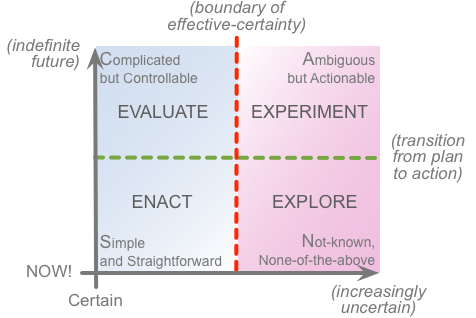
When everything seems certain, we barely touch that lower-right corner at all – we strip down our complicated plans into simple rules for action, and maybe amend them as needed in terms of a bit of feedback from Reality Department:
When we’re not rushed for action, we can dip into the complex, ever-ambiguous world of uncertainty via a leisurely loop of questions and answers:
By definition, though, the only place where we can find anything new is somewhere different, somewhere new – which means that our experiments in the relatively-comfortable world of the merely-ambiguous will at times depend on a deep-dive down into the ever-uncertain maelstrom of the Not-known:
A dive down into the unknown from the domain of ambiguity, aware from the real-time, pressure and stress, is usually quite a calm affair – a pleasurable frisson of fear, perhaps, but not much more than that. Not so, though, if we’re thrown into the not-known at run-time, when we hit up against something that doesn’t match up to ‘the rules’ or the current expectations. The amount of uncertainty may vary, but the fact that we get thrown across the ‘edge of panic’ at all will always bring on at least some element of very real fear:
So how do we deal with that fear, and instead find useful ideas and options from with the Not-known?
The short-answer is that we ‘seed the space’ – such as with overarching principles and the like, as seen in that setup for a transition over the ‘edge of innovation’ as shown earlier above. The Not-known, the void, somewhere contains every possibility: ‘seeding the space’ provides a means by which we can filter out the probably-useful from the probably-not-useful, and allow an anchor around which useful options can coalesce.
Yet it’s not as straightforward as it might seem, because we face a real Goldilocks problem here. If we use the term ‘evidence’ for the unfiltered flood of ideas, images and impressions that come our way over there in the Not-known, then placing no ‘seed’ for pattern-matching means that we’d likely all but drown in that chaos, with no means to make or find sense at all:
But if we overdo the filter – come into the Not-known with too many or too-rigid beliefs and assumptions – then all we’ll do is feed an echo-chamber of ‘policy-based evidence’, where we’ll likely block out any possibility of gaining the insights that we need:
The trick is to get the balance just right – not too little that we drown in overload, and not too much that would block us from any new insights, but ‘just enough‘:
Our aim with the Five Elements frame that we’re using with ‘the tools-inventory‘ is to apply ‘just enough structure’ and ‘just enough method’ to work well with the Not-known. It’s enough like a step-by-step that it’s comfortable-enough and fast-enough to use in conjunction with real-time, run-time ‘rules’, yet also rich enough and versatile enough to support ‘just enough’ of seeding and filtering for any type of context at any scope and scale:
That’s the ‘pretty’ version of Five Elements above, but we can also trim it down to something a lot simpler, even right down to a back-of-the-napkin scrawl:
But whichever way we draw it out, it always has that same attributes that we need for working with the unknown:
— It’s a method that can also work well with just about any other method.
— It’s a checklist that can also work well with just about any other checklist.
— It’s a structure that can work well with just about any other type of structure.
— It’s a tools-platform that can link together all types of disparate tools, eventually across the entirety of the toolset-ecosystem.
— It’s iterative and nesting, so that it works in the same way, consistently, to any required depth of exploration, across all types of context.
If we want to make sense of something – especially when we don’t know much about what’s going – we’re going to need that kind of frame, with ‘just enough simplicity’, to give us the right level of help that we need. If you’re going to go down into the void, to search for new ideas and insights, don’t dive down there without it!
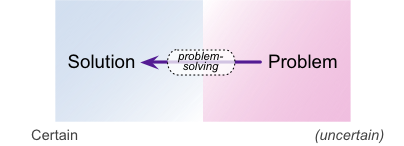
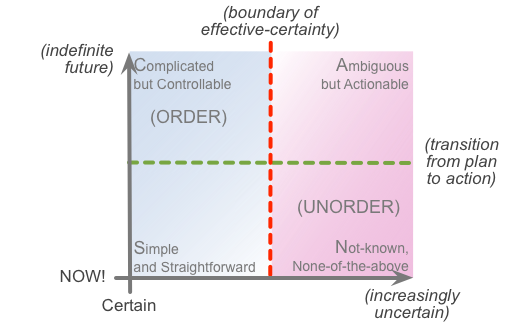

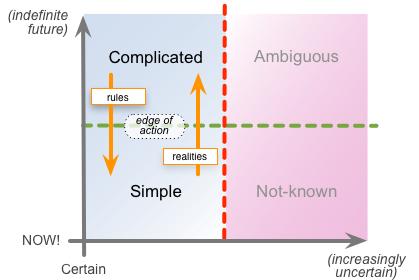
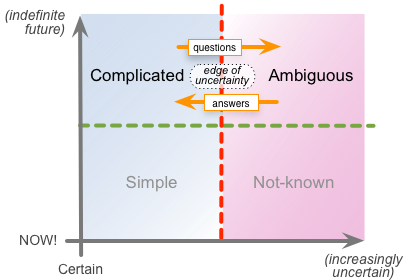
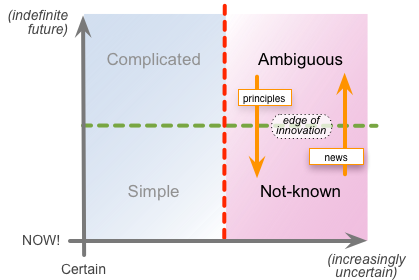

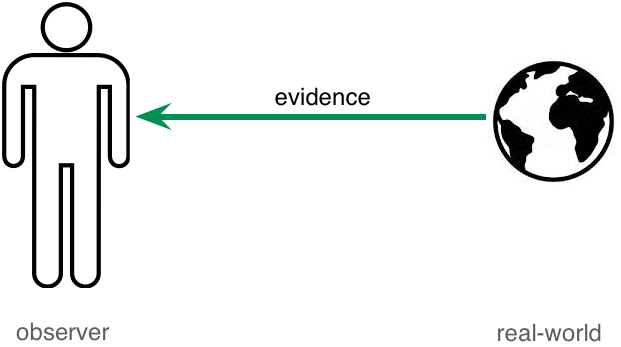
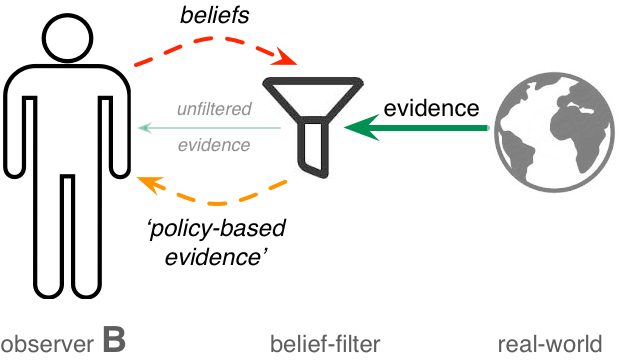
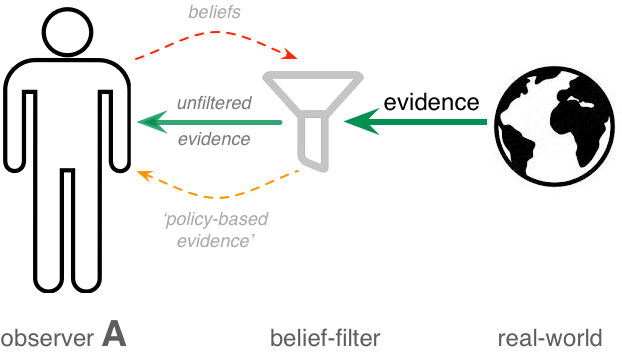
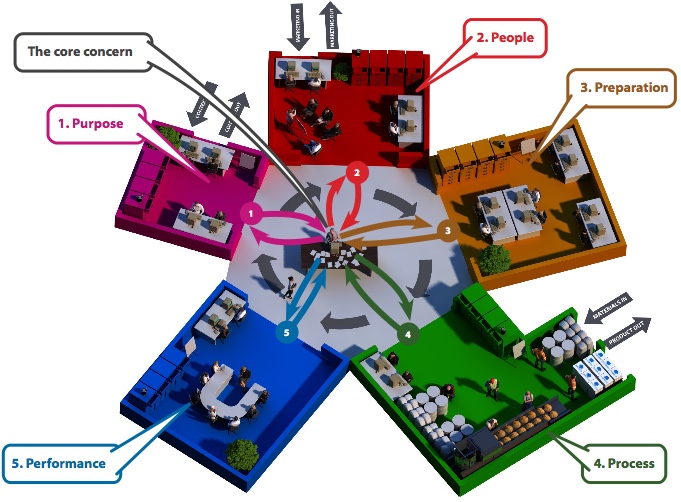
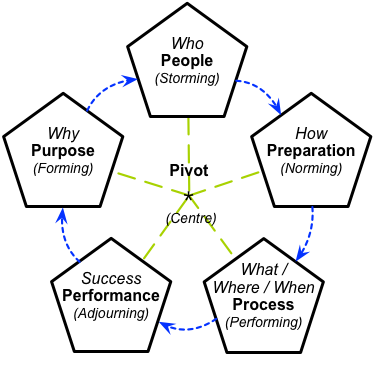
Leave a Reply